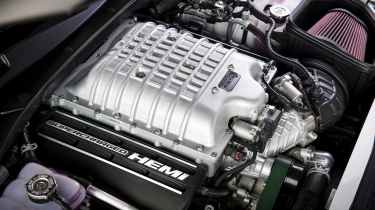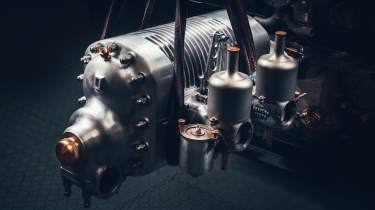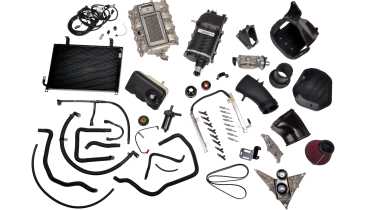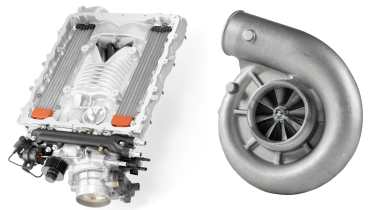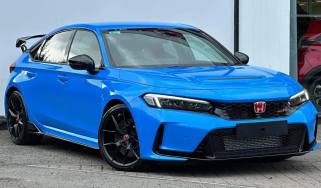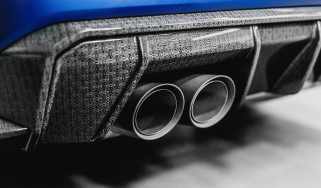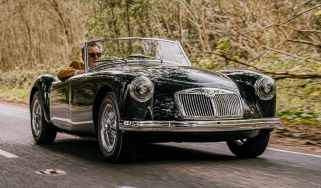Superchargers explained – how do they give cars more power?
Forced induction is commonplace these days but why have superchargers fallen out of fashion?
‘The last of the V8 Interceptors’ could be the way many young boys of as certain age learned about the existence of superchargers. Images of Mad Max, aka Mel Gibson, at the wheel of the Ford Falcon in Mad Max 2 with a huge supercharger sticking out of the bonnet, the V8 bellowing and all overlaid by the iconic whine of the supercharger struck a chord with impressionable lads who dreamed of owning a supercharged V8 one day.
Many manufacturers have flirted with superchargers over the years, but usually with a less extreme approach than the last of the V8 Interceptors. Mercedes had its Kompressor models, Jaguar was quite keen on attaching a blower to its R products and BMW’s first Mini used a supercharger to good effect in the Cooper S, but the battle for supremacy in the forced induction wars has clearly been won by the turbocharger. Trying to find a car without one these days is a bit like looking for a needle in a haystack.
Superchargers and turbochargers are remarkably similar in that their purpose is to compress air and deliver it to an engine’s combustion chamber. Adding more air to the combustion process means that more fuel can also be used which leads to a bigger explosion within the cylinders and therefore more power. However, they go about their business in quite different ways. Where the turbocharger uses exhaust gases to force air into the engine, superchargers are usually driven via a series of pulleys from the crankshaft.
The way a supercharger works is by having a housing that contains a rotor or rotors which draws air in, squeezes it into a smaller space and then discharges it into the inlet manifold. However, not all superchargers are the same. There are several types of superchargers, each with unique designs, operating principles, advantages, and disadvantages. The main types include Roots superchargers, twin-screw superchargers, centrifugal superchargers, and electric superchargers.
Roots superchargers
The Roots supercharger is one of the oldest and most recognizable types of superchargers – blower Bentleys from the late 1920s used them and the supercharger is the large metallic item that was bolted to the front of the engine. It uses two large rotors (typically lobed or twisted) that mesh together to trap air and force it into the engine’s intake manifold – it’s effectively a large blower, hence the term ‘Blower Bentley’.
One of their main advantages is that they develop strong low-end torque as, unlike a turbocharger you don’t need to wait for the exhaust gases to build up pressure as the supercharger is driven directly by the vehicle’s crankshaft. They’re relatively simple and robust, making them durable and easy to maintain, too.
However, they’re usually quite large and bulky which means that installing them can be difficult in a tightly packed engine bay and thanks to their bulk they do add weight, too. They also tend to blow in bursts rather than a smooth flow which can lead to poor power delivery and they tend to be inefficient at higher engine speeds, leading to increased heat generation and reduced performance.
Indeed, one of the main problems with superchargers is that the compressed air they produce is hot – air heats up as it's compressed – and as hot air is less dense the performance increase expected from adding the additional air to the combustion can’t create that much power. Thus, it needs an intercooler, either air-to-air or air-to-water, to reduce the temperature between the supercharger and the inlet manifold. This isn’t just a Roots problem; it applies to all superchargers. Roots superchargers do tend to be quite noisy, and while that might be all well and good when you’re living out your Mad Max fantasies it’s not what most drivers want on the majority of journeys.
Twin-screw superchargers
The twin-screw supercharger is similar in appearance to the Roots supercharger but operates differently. It uses two helical screws that compress air internally before delivering it to the engine. This design allows for more efficient air compression compared to the Roots supercharger, especially at high rpms. They also tend to deliver far more consistent boost pressures over a wide range of engine speeds and thanks to their more compact design they’re easier to fit into tight engine bays.
> Horsepower explained – what gives your car its performance?
They do tend to be more expensive than the Roots type though as the precision machining required for the helical screws makes twin-screw superchargers more costly to manufacture. They also generate heat like the Roots type so will require an intercooler and while they’re quieter than a Roots type they do still have a typical supercharger whine.
Centrifugal superchargers
The centrifugal supercharger (pictured right) operates similarly to, and also looks a bit like, a turbocharger but is driven by the engine’s crankshaft via a belt rather than by exhaust gases. It uses an impeller to draw in and compress air, which is then forced into the engine. They’re the most efficient type of supercharger and as they’re smaller and lighter than either the Roots or twin-screw type they’re much easier to fit in an engine bay. They’re also quieter than the Roots and twin-screw type and tend to produce less heat, too.
However, they’re not perfect. While centrifugal superchargers can spin at speeds of 100,000rpm they’re not at their best at low engine speeds where they don’t spin so fast which results in less low-end torque. They can also be a little bit laggy like turbochargers as they produce less boost at low rpms.
Aftermarket applications
While many manufacturers have deserted the supercharger there’s still a strong aftermarket for these systems as it’s a relatively cheap way of adding extra power without having to open an engine up and strengthen its internals. One of the main downsides of superchargers is that as they are mechanically driven they can sap power from the engine, consuming up to 20 per cent of an engine’s output. However, as superchargers can reliably generate 40-50 per cent more power the trade-off is often worth it.
